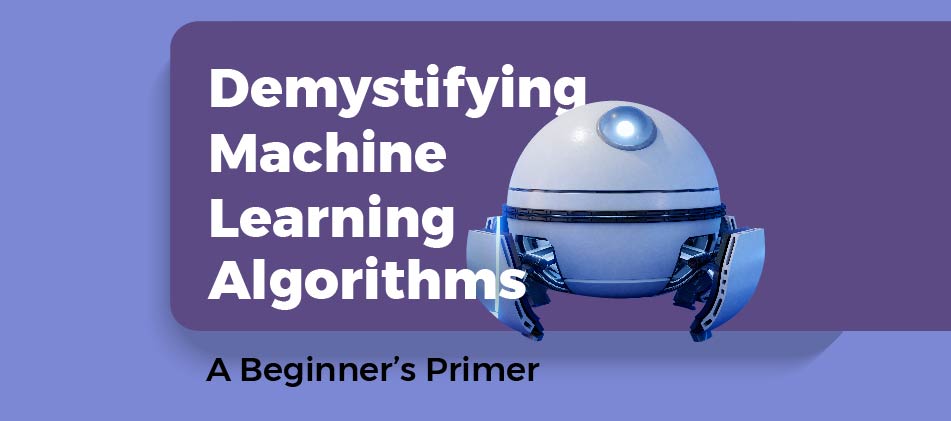Machine Learning (ML) is a transformative technology that powers many of the intelligent applications and services we use daily. In this beginner’s primer, we’ll unravel the world of machine learning algorithms, their significance, and provide insights to help you get started on your journey into this exciting field.
Table of Contents
ToggleUnderstanding Machine Learning
Machine Learning is a subset of artificial intelligence that enables computers to learn and make predictions or decisions without being explicitly programmed. At its core, ML relies on algorithms that analyze data, identify patterns, and make data-driven predictions.
Types of Machine Learning Algorithms
There are several types of machine learning algorithms, each suited to different tasks:
- Supervised Learning: In this type, algorithms learn from labeled data, making predictions or classifications based on known examples. Common supervised learning algorithms include linear regression and decision trees.
- Unsupervised Learning: Unsupervised learning algorithms work with unlabeled data, seeking to find patterns, clusters, or relationships within the data. K-means clustering and Principal Component Analysis (PCA) are examples of unsupervised learning techniques.
- Reinforcement Learning: Reinforcement learning involves training algorithms to make decisions by rewarding them for taking the right actions. It’s commonly used in game-playing AI and autonomous robotics.
- Deep Learning: Deep learning is a subset of ML that uses artificial neural networks to model complex patterns in data. Convolutional Neural Networks (CNNs) and Recurrent Neural Networks (RNNs) are popular deep learning architectures.
Getting Started with Machine Learning
If you’re a beginner looking to explore machine learning, here are some steps to get you started:
- Learn the Basics: Start with foundational ML concepts, such as data preprocessing, feature engineering, and model evaluation.
- Programming Languages: Familiarize yourself with programming languages commonly used in ML, such as Python and R.
- Online Courses: Enroll in online courses and tutorials on platforms like Coursera, edX, and Udemy to build your skills.
- Practice Projects: Work on small ML projects to apply what you’ve learned. Kaggle offers datasets and competitions for hands-on experience.
- Books and Resources: Explore books and resources like “Introduction to Machine Learning with Python” by Andreas C. Müller and Sarah Guido.
Conclusion
Machine learning algorithms are the backbone of AI applications, driving innovations in fields like healthcare, finance, and autonomous vehicles. While the field can be complex, it’s accessible to beginners willing to learn and explore. With the right resources and a passion for problem-solving, you can embark on a rewarding journey into the world of machine learning.



